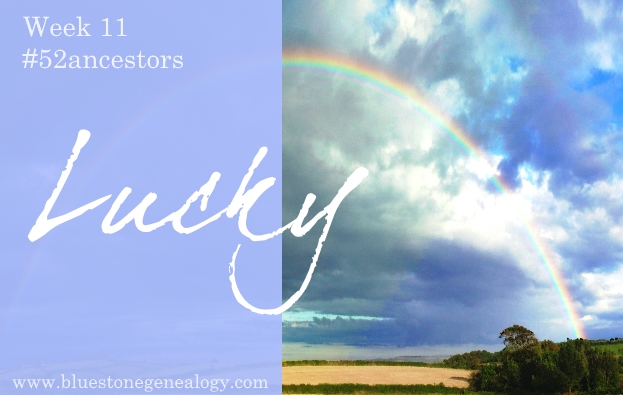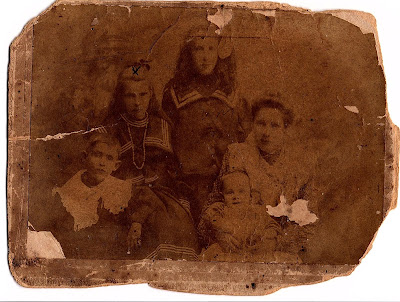Hail, Rain or Sunshine...
 |
| Boy enjoying the flood waters, c.1950s, Copyright Beard Family, sourced from pictureaustralia |
Today, as we battle the devastating effects of climate change and global warming (often cursing the weatherman for getting it wrong) it's difficult to imagine our ancestors living in the past, where they didn't have the benefit of satellite imagery or the Bureau of Meteorology. They were all constantly subject to the ebb and flow of the Seasons, and lived at the mercy of Mother Nature.
From river floods to epic heat waves, the next two blog posts will explore the catastrophic effects that extreme weather conditions has had on two families, ranging from a loss of property and livelihood, to the loss of life.
On Wednesday 16 June 1875 at the Footscray Police Court, James Logan applied for a transfer of license for the Ship Inn - a hotel he and his family had operated for the past six years (1869 - 1875) to Patrick Stack.
 |
| Ship Inn, c.1890. Operated by James Logan from 1869 - 1875. Copyright Footscray Historical Society |
He then went on to apply for a license for a new house on Swamp Rd. The police described the house as being "...a very good one" and the application was granted (Williamstown Chronicle, 19/06/1875, p.4). The new house (or Public House), the Apollo Hotel, was located on the corner of the Swamp Road (now known as Dynon Road) and Kensington Road in Footscray, which lies on the eastern bank of the Saltwater River (now known as the Maribyrnong River). It contained eight rooms that were to be used for business purposes, exclusive to those required for the use of the family.
 |
| The Age, 08/06/1875, p.4 |
Where James was renting the Ship Inn on Maribyrnong Road; a smaller establishment on the Western bank, with three bedrooms, two sitting rooms, and a bar (excluding those required for private use) from C.J Harrison with a net value of £51 and borough or city rates of around £3 5s, the Apollo Hotel had a net value of around £60 for slightly below or the same rates. It is more than likely however, that James was paying a higher rent to William Mitchell, the owner of the Apollo Hotel.
During the 1860s, there were two floating docks that commenced operation on the Melbourne (eastern) side of the Saltwater River (Maribyrnong River) opposite Footscray and they attracted most of the shipbuilding and ship repair work in the port of Melbourne. This new trade attracted hundreds of new employees with throats that were dry and pockets that were filled with their recent pay - a seemingly attractive combination for James who would have been more than happy to quench their thirsts.
 |
| Map showing the different locations of James Logan's establishments |
James continued to operate with seemingly some success until disaster hit in March 1878 in the form of a torrential downpour. The Williamstown Chronicle reported the subsequent floods on Saturday, 23 March 1878. According to the Chronicle, the rain commenced the Thursday prior and continued almost without intermission until the Saturday. While in some areas of Melbourne, the flood waters receded after the rain had finished, there was an "extraordinarily high tide" that came in that Saturday night, affecting many of the properties located on the lower river banks.
By 4 o'clock Saturday afternoon, all road communication from Footscray to Melbourne had to be completely stopped. According to the Chronicle, "From the river on the Swamp-road to the North Melbourne bridge it was one mass of water, at least 3ft. in depth and the toll house, Logan's [,] Powell's, and Gilman's public houses, on the road, were in a depth of water up to the counter."
 |
| Maribyrnong River flood from September 1916, Copyright Footscray Historical Society |
 |
| Clearing flood debris in front of Sprong's hotel, 1906, Copyright Footscray Historical Society |
Thus on Friday 12 April 1878, James Logan had no other option but to declare Insolvency, caused by "...Losses by the late flood, sickness of self and family, and heavy rent" [source: The Argus, 12 April 1878, p.5] as well as consequent loss of business. Insolvency is the state of being unable to pay money owed, on time. There are two types of insolvency: cash-flow v. balance-sheet insolvency. Cash-flow insolvency is when a person or company has enough assets to pay their debt, but doesn't have the appropriate form of payment (ie. no liquid assets). This type of insolvency can usually be resolved by negotiation. Whereas balance-sheet insolvency is when a person does not have enough assets to pay all of their debts. They sometimes may enter into a state of bankruptcy, or negotiation with their creditors.
In James' case his liabilities were listed as £566 4s 5d (this is read as 566 pounds, 4 shillings and 5 pence for those who were wondering). He had £418 13s 6d assets, so was in debt for £147 10s 11d. Mr Jacombs was his assignee. In insolvency cases, the person in debt transfers legal and equitable title, as well as custody and control of property to a third party (an assignee) to apply the proceeds of sale to the debtors creditors. Negotiations appear to have been successful and the general meeting for James' estate was closed at the Insolvent Court on Wednesday, 24 April 1878 [source: The Argus, 25 April 1878, p.9].
It appears that the losses suffered from the 1878 flood were enough for James to throw in his bartowel. This financial devastation, combined with his own bad health, had James retiring to a cottage on Capel Street in West Melbourne, where he would remain for the next three years before his death in 1881 of Rheumatism Meningitis.
Please join me next week for Part 2 of Ancestors and Adverse Weather.
~ Louise
 |
| My connection to James Logan (1827 - 1881) |


Well done enjoying the maps and pictures that you have added . Helps put the and place pieces together
ReplyDeleteThis is a great story, Louise; I think I'll be following your blog with interest :-)
ReplyDeleteWelcome Eunice! I'm so glad that you enjoyed the story. James' life was definitely an interesting one, and I look forward to sharing more of his stories in the future - I hope you can join us for them too.
DeleteLouise & Camel (FHS) Thank you very much for this great story of our local history, I know this area pretty well AND Dynon Road STILL has poor drainage issues, and I live in the Capel St vacinity, if you know James' address, I would like to share this story with my friends at the North Melb. Hotham History Project, I manage their FB page...if that is acceptable to you...best wishes for a great 2018.
ReplyDeleteHi Don, and welcome! James had two addresses on Capel street prior to his death - he lived an 5 Union Cottages in 1879, and then at No. 1 Capel Cottages in 1881.
ReplyDeletePlease feel free to share James' story - several branches of my family had strong ties with Melbourne's Western suburbs -usually around the Footscray / Kensington / Newmarket/Flemington area, later in Altona from the 1950s to the 00's. I hope you will continue to follow along in the future.
All the best,
Louise